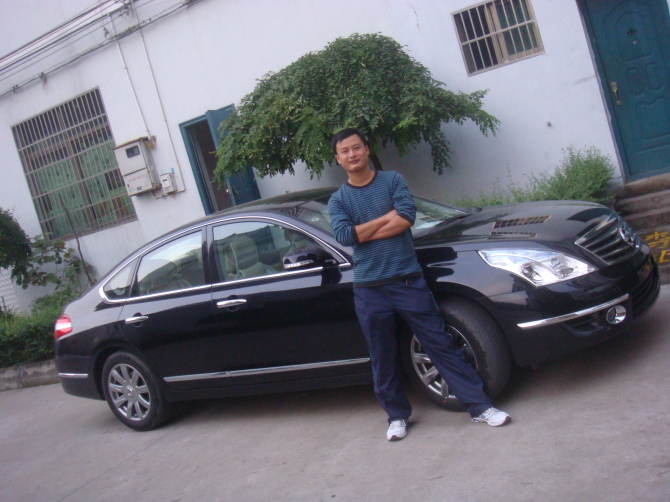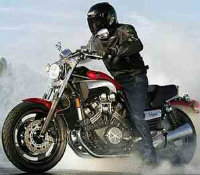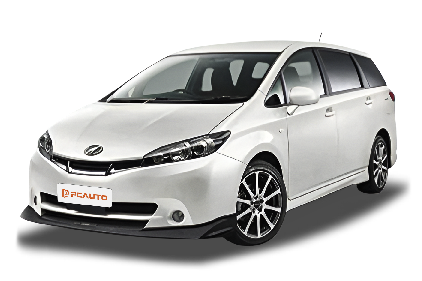Q
What is the difference between Toyota Wish and Toyota Spacio?
The Toyota Wish and Toyota Spacio are actually the same model with different names in different markets. The main differences lie in the sales regions and market positioning. The Toyota Wish is mainly targeted at the Southeast Asian market, including Malaysia, while the Toyota Spacio is the name for the Japanese domestic market. The two models are almost identical in design and configuration, both being positioned as family MPVs, offering flexible seating arrangements and practical space performance.
In Malaysia, the Toyota Wish is favored by family users for its reliability, fuel economy, and spacious interior. The combination of its 2.0-liter engine and CVT transmission meets both power and energy-saving needs. It's worth noting that although their core configurations are similar, some details such as exterior design, interior materials, or technological features may vary slightly due to regional regulations or market demands.
For Malaysian consumers, choosing the Toyota Wish means enjoying Toyota's comprehensive after-sales service network and high second-hand car resale value. This car has built a good reputation in the local market and is especially suitable for users who need to balance daily commuting and family trips.
Special Disclaimer: This content is published by users and does not represent the views or position of PCauto.
Related Q&A
Q
How much fuel does a Toyota Wish use per km?
The fuel consumption of the Toyota Wish varies depending on the model year, engine displacement (such as 1.8L or 2.0L), and driving conditions. According to actual data, the combined fuel consumption of the 1.8L model is around 0.08 to 0.10 Malaysian Ringgit per kilometer (approximately 6.5 to 8.0 liters per 100 kilometers based on the current oil price). The 2.0L model has slightly higher consumption, about 0.10 to 0.12 Malaysian Ringgit per kilometer (8.0 to 9.5 liters per 100 kilometers).
The actual fuel consumption may be affected by road conditions, air - conditioning usage, and driving habits. For example, frequent rapid acceleration or traffic congestion in the city can significantly increase fuel consumption. It is recommended that car owners perform regular maintenance (such as replacing air filters and spark plugs) and maintain proper tire pressure to optimize fuel efficiency.
The oil price in Malaysia fluctuates greatly. You can refer to the fuel consumption test data published by MyJPJ or SPAD. Hybrid models are usually more fuel - efficient, but Toyota has not launched a hybrid version of the Wish. If you are considering energy - saving options, you can compare models in the same class, such as the Honda Jazz Hybrid or the Toyota Corolla Cross Hybrid.
Q
How many trims does the Toyota Wish have?
The Toyota Wish is available in three trim levels: the 2017 Toyota Wish 2.0L Z, the 2017 Toyota Wish 1.8L X, and the 2017 Toyota Wish 2.0L G. While these trims share many core features, there are some differences in specific details. For instance, the 2.0L Z weighs 1,420 kg, the 1.8L X weighs 1,340 kg, and the 2.0L G weighs 1,380 kg. In terms of seating capacity, the 2.0L Z offers six seats, whereas the 1.8L X and 2.0L G provide seating for seven. The body dimensions also vary slightly: the 2.0L Z measures 1,745 mm in width and 1,600 mm in height, while the 1.8L X and 2.0L G are 1,695 mm wide and 1,590 mm high.
Despite these differences, the three trims share several key specifications. All versions feature a CVT transmission, front-wheel drive, and an official combined fuel consumption of 6.9 L/100 km. Additionally, each model comes equipped with a comprehensive range of safety and convenience features.
Q
What is the maintenance schedule for Toyota Wish?
It is recommended that the Toyota Wish undergo regular maintenance every 6 months or every 10,000 kilometers, whichever comes first. This is the standard set by Toyota officially for the tropical climate and road conditions in Malaysia. Basic maintenance includes changing the engine oil and oil filter, inspecting the brake system, tire condition, and chassis components. Meanwhile, the air - conditioning filter needs to be cleaned or replaced regularly to cope with the hot and humid environment. The transmission fluid and brake fluid should be checked every 20,000 kilometers. It is advisable to replace the spark plugs and coolant at 40,000 kilometers, and special attention should be paid to the wear of the timing belt or chain at 60,000 kilometers. For Malaysian users, it is especially recommended to shorten the replacement cycle of the air filter, as the dusty environment will accelerate its clogging. It should be noted that the battery pack cooling system of the hybrid version of the Wish requires additional inspection, which is different from that of ordinary fuel - powered vehicles. Strictly following the maintenance manual can not only extend the vehicle's lifespan but also maintain fuel economy. Especially in the frequently congested road conditions in Malaysia, regular maintenance is particularly important for maintaining engine efficiency. If you often drive in coastal areas, you should also increase the frequency of chassis anti - rust inspections, as sea breezes can accelerate the corrosion of metal parts.
Q
How much engine oil does a Toyota Wish require?
The oil capacity of the Toyota Wish depends on the specific year and engine model. Take the common second - generation models from 2009 to 2017 in Malaysia as an example. The version equipped with the 2.0L 3ZR - FE engine usually requires about 4.2 liters of oil (including oil filter replacement), while the 1.8L 2ZR - FE engine needs around 3.8 liters. When actually adding oil, you should refer to the oil dipstick scale. It is recommended to use 5W - 30 fully synthetic oil that meets the API SN standard or higher.
It's worth noting that in Malaysia's tropical climate, you can consider using oil with a slightly higher viscosity, such as 5W - 40, to enhance high - temperature protection. However, you need to follow the suggestions in the original factory manual. Regular oil changes are crucial for engine maintenance. Generally, the oil needs to be changed every 5,000 to 10,000 kilometers or every 6 months. If you often drive short distances or idle for long periods, you should shorten the maintenance cycle. At the same time, I'd like to remind car owners to look for the JASO or ILSAC certification marks when purchasing oil to ensure the quality.
Q
What is the best engine oil for Toyota Wish?
For the Toyota Wish, the most suitable engine oils are 5W - 30 or 10W - 30 fully synthetic oils that meet Toyota's original factory standards. These two viscosities can provide excellent lubrication performance and fuel economy under Malaysia's climatic conditions. In particular, the high - temperature stability and oxidation resistance of fully synthetic oils are more suitable for tropical climates, and they can also extend the engine's service life. If the vehicle has high mileage (over 100,000 kilometers), you can consider using high - mileage oils such as 5W - 40 or 10W - 40 to provide better sealing. When choosing engine oil, make sure the product has API SN or SP certification and meets the ILSAC GF - 6 standard. These labels indicate that the oil has reached the current highest international performance standards.
It's worth noting that the oil change interval for the Toyota Wish is generally every 5,000 to 10,000 kilometers or 6 months, depending on driving conditions and the type of oil. Vehicles that often drive in congested urban traffic are recommended to shorten the change interval. Additionally, the quality of the original factory oil filter is more reliable, so it is recommended to replace it when changing the oil. Understanding this knowledge can not only help you better maintain your beloved car but also avoid engine wear problems caused by using improper oil.
Q
What are the advantages of the Toyota Wish?
As a classic 7-seater MPV, the Toyota Wish is highly popular among family users in the Malaysian market. Its advantages mainly lie in practicality and reliability. The spacious and flexible cabin space, combined with the foldable third-row seats, can easily meet the needs of family outings or cargo transportation. The 1.8L and 2.0L Dual VVT-i engines strike a balance between fuel economy and power performance, making them suitable for Malaysia's diverse road conditions.
In addition, Toyota's well-established after-sales service network in the local area and the high resale value of its used cars have also reduced the long-term usage cost. It's worth mentioning that the air - conditioning cooling efficiency of MPV models is particularly important in Malaysia's hot climate, and the Wish's independent rear - row air - conditioning vents are designed with this in mind.
Although there are more new models emerging in the market today, the Wish, with its time - tested durability, remains a practical choice for budget - conscious families. It is especially suitable for users who need to pick up and drop off children frequently or run small businesses.
Q
What type of car is the Toyota Wish?
The Toyota Wish is a sporty MPV. This type of vehicle combines the spatial flexibility of an MPV with the driving experience of a sports car, offering users a unique driving option. The Toyota Wish has a length of 4,590mm, a width ranging from 1,695 to 1,745mm, a height between 1,590 and 1,600mm, and a wheelbase of up to 2,750mm. Its size design makes the interior space spacious and practical. It comes in a 5-door layout with either 6-seat or 7-seat configurations. The rear seats are split and foldable, meeting different needs for passenger-carrying and storage during travel. In terms of power, it offers a choice between 1.8L and 2.0L gasoline engines, paired with a CVT transmission and front-wheel drive, ensuring smooth power delivery during daily driving. Regarding safety features, it is standardly equipped with systems such as ABS anti-lock braking, lane departure warning, and active braking, along with 8 airbags, providing reliable safety protection for both drivers and passengers.
Q
What is the safety rating of the Toyota Wish?
The Toyota Wish performs averagely in safety ratings. According to past test records, this model has achieved above-average results in safety assessments in some regions. However, the specific ratings may vary depending on different testing agencies and model years. In the Malaysian market, the Toyota Wish is favored by many family users for its practical space and reliability. It should be noted, though, that earlier models may not be equipped with the latest active safety technologies, such as automatic emergency braking or lane-keeping assist. For safety-conscious consumers, it is recommended to thoroughly understand the safety equipment of the specific year and configuration before purchasing. You can also refer to the data of regional safety evaluation institutions like ASEAN NCAP. The road conditions in Malaysia are diverse. Whether you're driving in the city or on a long trip, it's extremely important to choose a vehicle with good safety performance. Besides paying attention to crash ratings, daily vehicle maintenance and safe driving habits should not be ignored either.
Q
Does Toyota Wish have a timing belt or chain?
The models of the Toyota Wish launched in the Malaysian market are mainly equipped with 1.8 - liter and 2.0 - liter gasoline engines. Both of these two engines adopt the timing chain design instead of the timing belt. The advantage of the timing chain is that it has a longer lifespan. Usually, it can last for the entire life cycle of the engine without replacement, which reduces the long - term maintenance cost. On the other hand, the timing belt needs to be regularly inspected and replaced at around 60,000 to 100,000 kilometers to avoid the risk of breakage. For Malaysian car owners, the timing chain is more suitable for the local hot and rainy climate because it has better resistance to high temperatures and humidity. However, it is still recommended to regularly check whether the chain tensioner is working properly. It should be noted that although the chain is maintenance - free, if the engine makes abnormal noises (such as metal friction sounds), it should be repaired in time, which is the same for all models with chain - driven systems. In addition, car owners can further confirm the specific configuration through the vehicle manual or the markings in the engine compartment. There may be slight differences in the Wish models of different years.
Q
How fast is Toyota Wish?
The Toyota Wish is a popular 7-seater MPV in Malaysia. Its power performance depends on the specific model and engine configuration. The early models are equipped with 1.8-liter or 2.0-liter naturally aspirated engines. The 1.8-liter version has a maximum horsepower of about 132 hp, while the 2.0-liter version can reach about 141 hp. It takes about 10-12 seconds to accelerate from 0 to 100 km/h, and the top speed is about 180-190km/h. It's suitable for family use. Although it's not known for its sporty performance, the smooth CVT transmission and comfortable suspension tuning make it perform well in city driving and long-distance trips. It's worth noting that the design of this kind of MPV focuses more on space utility and fuel economy rather than ultimate speed. For Malaysian consumers, the reliability and low maintenance cost of the Wish are also important reasons for its popularity. If you have higher requirements for performance, you can consider the sporty models of the same brand. But as a family car, the Wish strikes a good balance between power and practicality.
Latest Q&A
Q
What are the safety rating of the 2019 Subaru XV?
The 2019 Subaru XV really shines when it comes to safety, racking up five-star ratings from several big-name authorities. That includes a top score from Euro NCAP, and honestly, it’s easy to see why. Subaru’s gone all-in with a tough-as-nails body structure and some seriously smart safety gear. Take the EyeSight driver assist system, for example – it’s got adaptive cruise control, pre-collision braking, and lane keep assist, all working together to help you stay out of trouble on the road.
For Malaysian drivers, this kind of safety kit isn’t just a nice-to-have; it’s a game-changer, especially with our mixed bag of road conditions. Whether you’re weaving through city traffic or heading out for a weekend escape, the XV feels like it’s got your back. And it doesn’t stop there – Subaru’s thrown in seven airbags and their Vehicle Dynamics Control (VDC) for good measure, beefing up the overall safety package even more.
At the end of the day, picking the Subaru XV means you’re not just getting a fun drive with solid handling – you’re also getting peace of mind with top-tier safety. For Malaysian families who prioritize safe travels, that’s definitely a big check in the ‘win’ column.
Q
How much is the Subaru XV 2019?
The 2019 Subaru XV's pricing in Malaysia varies by trim and specs. Keep in mind, though, that actual prices might shift a bit depending on dealer promotions or special offers at the time.
Under the hood, this crossover packs Subaru's legendary Symmetrical All-Wheel Drive system, paired with their Boxer engine. Together, they deliver that signature Subaru balance—sharp handling, steady stability, and solid go-anywhere capability, which makes it a great fit for Malaysia's rainy weather and sometimes tricky road conditions.
Safety gets a boost too with the EyeSight driver assistance suite. You're looking at features like adaptive cruise control, pre-collision braking, and lane-keeping assist—all the good stuff to give you extra peace of mind behind the wheel.
Inside, Subaru stepped up the game with nicer materials, and the 8-inch touchscreen infotainment system is a highlight, supporting both Apple CarPlay and Android Auto for seamless smartphone integration.
The XV has built a solid fan base here in Malaysia, and it's easy to see why. People love it for its rugged durability, top-notch safety credentials, and everyday practicality. It's especially appealing if you're someone who values a fun driving experience and enjoys getting out for weekend adventures.
If the XV has caught your eye, your best bet is to swing by your nearest authorized Subaru dealer. They can hook you up with the latest pricing, arrange a test drive, and let you get a real feel for it. And hey, while you're at it, it never hurts to cross-shop with other SUVs in its class—think Honda CR-V or Mazda CX-5—to make sure you're getting exactly what you want before pulling the trigger.
Q
What is the torque of the 2020 BMW 7-Series?
The 2020 BMW 7 Series offers a diverse range of powertrain options in the Malaysian market, with torque figures varying significantly across engine types. The 740Li, for instance, packs a 3.0-liter inline-six turbo that cranks out a healthy 450 Nm of peak torque. Step up to the 750Li xDrive, and its 4.4-liter twin-turbo V8 ups the ante to a robust 650 Nm. For the ultimate thrill, the high-performance M760Li xDrive unleashes a monster 850 Nm from its 6.6-liter twin-turbo V12—numbers that truly showcase BMW's engineering prowess in powertrain tuning.
For Malaysian drivers, that extra torque isn't just about bragging rights; it translates to sharper off-the-line acceleration and quicker overtakes—super useful in our stop-start city traffic or when merging onto highways, especially with our tropical weather playing havoc. What’s more, BMW’s xDrive all-wheel-drive system ensures all that twist is put to the tarmac effectively, while the smooth-shifting 8-speed Steptronic gearbox strikes a nice balance between sporty responsiveness and everyday comfort.
If you’re shopping around, it’s worth cross-checking torque figures with rivals like the Mercedes S-Class or Audi A8. But remember, raw numbers only tell part of the story—how a brand tunes its torque curve can drastically affect real-world driving feel. My two cents? Always take a test drive before making your call.
Q
What is the warranty on a 2020 BMW 7-Series?
The 2020 BMW 7 Series in Malaysia typically comes with a 5-year or 100,000 km warranty, whichever comes first. This coverage takes care of the car's major mechanical bits – think engine, transmission, and drivetrain. You also get 12 months of rust warranty and a 24-month battery warranty thrown in. Now, it's worth noting that what's covered can change based on how you drive the car or if you skip those scheduled services at authorized BMW centers. So, do yourself a favor and stick to the official service centers for your maintenance – that way, you keep that warranty valid.
If you want extra peace of mind, BMW offers extended warranty options you can pay for. Once the factory warranty runs out, you can pick an extended plan that suits your needs, giving you longer coverage. For Malaysian owners, understanding these warranty details is pretty crucial. Let's face it, our tropical climate can be tough on cars – electronics and rubber parts especially take a beating. Staying on top of regular servicing and making the most of that warranty can really help keep your 7 Series running strong and performing at its best for longer. The good news is BMW's after-sales network here is pretty solid, so getting professional repairs and support should be a breeze.
Q
Does the 2020 BMW 7-Series have a hybrid or plug-in hybrid model?
The 2020 BMW 7 Series does offer plug-in hybrid (PHEV) variants, specifically the 745e and the long-wheelbase 745Le. These models pair a 3.0-liter inline-six turbocharged engine with an electric motor. They deliver an all-electric range of around 50-58 kilometers (WLTP cycle), which is perfect for those short commutes around Malaysian cities, while also cutting down on fuel usage. BMW's plug-in hybrid tech doesn't just boost fuel economy; it also lets you top up using a home charger or public charging stations, so you get the best of both performance and eco-friendliness. In the Malaysian market, these luxury hybrid models usually come with tax incentives, like reduced import duties or road tax breaks – definitely a solid pick if you're after both efficiency and a premium ride. It's also worth noting that BMW's hybrid system switches between power sources super smoothly, and with multiple driving modes (think all-electric, hybrid, or sport mode), it can handle just about any road situation you throw at it. If you're thinking of picking one up, new or used, I'd recommend checking with BMW Malaysia's official channels to confirm the exact specs and warranty policies. That way, you can be sure you're getting the full after-sales support package.
View MoreRelated News

2026 Toyota GR Corolla launched in Japan, with improved cooling and body rigidity
Kevin WongSep 19, 2025

Detailed analysis of Toyota's different hybrid systems: THS, Hybrid MAX, i-FORCE MAX, PHEV, Multi-Stage HEV
Kevin WongSep 16, 2025

2026 Toyota Land Cruiser released in North America, offering the 1958 edition as a tribute to history
JohnSep 15, 2025

Toyota Corolla facelift model unveiled, the new front design looks like Camry
JamesSep 11, 2025

2025 Toyota Aqua Released, Fuel Efficiency 35.4km/L, More Worth Buying Than Corolla
Kevin WongSep 3, 2025
View More


















Pros
Cons